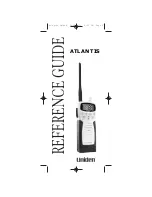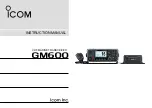
104
The System Setup and Other Setup menus
12
!
5.2ch F+Surr Bi-Amp
– Select this setting if you’re bi-amping your front and surround speakers (see
!
5.2ch F+C Bi-Amp
– Select this setting if you’re bi-amping your front and center speakers (see
!
5.2ch C+Surr Bi-Amp
– Select this setting if you’re bi-amping your center and surround speakers (see
!
Multi-ZONE Music
– See
on
.
!
5.2 +ZONE 2+HDZONE
– Select to use the surround back (ZONE 2) and front wide (HDZONE) speaker termi-
nals for an independent systems in another zone (see
).
!
5.2 +ZONE 2+ZONE 3
– Select to use the surround back (ZONE 2) and front wide (ZONE 3) speaker terminals
for an independent systems in another zone (see
3 If you selected 7.2.2ch TMd/FW, 7.2.2ch TMd/FH, 7.2ch + Speaker B, 7.2ch + Front Bi-Amp,
or 7.2ch + HDZONE in Step 2, select the placement of the surround speakers.
In a 7.2-channel surround system with surround speakers placed directly at the sides of the listening position,
the surround sound of 5.1-channel sources is heard from the side. This function mixes the sound of the surround
speakers with the surround back speakers so that the surround sound is heard from diagonally to the rear as it
should be.
Depending on the positions of the speakers and the sound source, in some cases it may not be possible to
achieve good results. In this case, set the setting to
ON SIDE
or
IN REAR
.
!
ON SIDE
– Select when the surround speakers is positioned right beside you.
!
IN REAR
– Select when the surround speaker is positioned obliquely behind you.
4 When ‘Setting Change?’ is displayed, select Yes.
If
No
is selected, the setting is not changed.
You will return to the
Manual SP Setup
menu.
Using Multi-ZONE Music
Multi-ZONE Music
can be used to play the same sound in the MAIN ZONE, ZONE 2 and ZONE 3, for example for
home parties. Normally set
Speaker System
to
5.2 +ZONE 2+ZONE 3
for multi-zone/multi-source playback, then
switch it to
Multi-ZONE Music
when having a home party. When this is done, the sound of the input function
selected for the MAIN ZONE is played in all zones (the MAIN ZONE, ZONE 2 and ZONE 3).
!
There is virtually no delay in the sound.
!
Switching of the input for only ZONE 2 or ZONE 3 is disabled, but the volume can be adjusted or muted for the
individual zones.
!
This is only valid for ZONE 2 and ZONE 3 connections using the speaker terminals. No sound is output from the
ZONE 2 and ZONE 3 pre-out terminals. Nothing is output from the
ZONE 2
and
ZONE 3
COMPONENT VIDEO
output and
VIDEO
output terminals.
!
The
HDZONE
setting does not apply to
Multi-ZONE Music
.
Speaker Setting
Use this setting to specify your speaker configuration (size, number of speakers and crossover frequency). It
is a good idea to make sure that the settings made in
Automatically conducting optimum sound tuning (Full
are correct. Note that this setting applies to all MCACC presets, and cannot be set
independently.
1 Select ‘Speaker Setting’ from the Manual SP Setup menu.
2 Choose the set of speakers that you want to set, then select a speaker size.
Use
k
/
l
to select the size (and number) of each of the following speakers:
!
Front
– Select
LARGE
if your front speakers reproduce bass frequencies effectively, or if you didn’t connect a
subwoofer. Select
SMALL
to send the bass frequencies to the subwoofer.
!
Center
– Select
LARGE
if your center speaker reproduces bass frequencies effectively, or select
SMALL
to
send bass frequencies to the other speakers or subwoofer. If you didn’t connect a center speaker, choose
NO
(the center channel is sent to the front speakers).
!
TMd
– Select
LARGE
if your top middle speakers reproduce bass frequencies effectively, or select
SMALL
to send bass frequencies to the other speakers or subwoofer. If you didn’t connect the top middle speakers,
choose
NO
(the top middle channel is sent to the front speakers).
—
You can adjust this setting only when
Speaker System
setting is
7.2.2ch TMd/FW
,
7.2.2ch TMd/FH
,
5.2.4ch
or
7.2ch + Speaker B
.
!
TFw
– Select
LARGE
if your top forward speakers reproduce bass frequencies effectively, or select
SMALL
to send bass frequencies to the other speakers or subwoofer. If you didn’t connect the top forward speakers,
choose
NO
(the top forward channel is sent to the front speakers).
—
You can adjust this setting only when
Speaker System
setting is
5.2.4ch
.
—
When you set
TBw
to
NO
, this setting is automatically set to
NO
.
!
TBw
– Select
LARGE
if your top backward speakers reproduce bass frequencies effectively, or select
SMALL
to send bass frequencies to the other speakers or subwoofer. If you didn’t connect the top backward speak-
ers, choose
NO
(the top backward channel is sent to the front speakers).
—
You can adjust this setting only when
Speaker System
setting is
5.2.4ch
.
—
When you set
TFw
to
NO
, this setting is automatically set to
NO
.
!
FH
– Select
LARGE
if your front height speakers reproduce bass frequencies effectively, or select
SMALL
to
send bass frequencies to the other speakers or subwoofer. If you didn’t connect front height speakers, choose
NO
(the front height channel is sent to the front speakers).
—
You can adjust this setting only when
Speaker System
setting is
7.2.2ch TMd/FH
.
—
If the surround speakers are set to
NO
, this setting will automatically be set to
NO
.
!
FW
– Select
LARGE
if your front wide speakers reproduce bass frequencies effectively, or select
SMALL
to
send bass frequencies to the other speakers or subwoofer. If you didn’t connect front wide speakers, choose
NO
(the front wide channel is sent to the front speakers).
—
You can adjust this setting only when
Speaker System
setting is
7.2.2ch TMd/FW
.
—
If the surround speakers are set to
NO
, this setting will automatically be set to
NO
.
!
Surr
– Select
LARGE
if your surround speakers reproduce bass frequencies effectively. Select
SMALL
to send
bass frequencies to the other speakers or subwoofer. If you didn’t connect surround speakers choose
NO
(the
sound of the surround channels is sent to the front speakers or a subwoofer).
!
SB
– Select the number of surround back speakers you have (one, two or none). Select
LARGEx2
or
LARGEx1
if your surround back speakers reproduce bass frequencies effectively. Select
SMALLx2
or
SMALLx1
to send
bass frequencies to the other speakers or subwoofer. If you didn’t connect surround back speakers choose
NO
.
—
You can adjust this setting only when
Speaker System
setting is
7.2.2ch TMd/FW
,
7.2.2ch TMd/FH
,
7.2ch + Speaker B
,
7.2ch + Front Bi-Amp
or
7.2ch + HDZONE
.
—
If the surround speakers are set to
NO
, the surround back speakers will automatically be set to
NO
.
!
SW 1
/
SW 2
– LFE signals and bass frequencies of channels set to
SMALL
are output from the subwoofer
when
YES
is selected. Choose the
PLUS
setting if you want the subwoofer to output bass sound continuously
or you want deeper bass (the bass frequencies that would normally come out the front and center speakers
are also routed to the subwoofer). If you did not connect a subwoofer choose
NO
(the bass frequencies are
output from other speakers).
—
If you have a subwoofer and like lots of bass, it may seem logical to select
LARGE
for your front speakers
and
PLUS
for the subwoofer. This may not, however, yield the best bass results. Depending on the speaker
placement of your room you may actually experience a decrease in the amount of bass due low frequency
cancellations. In this case, try changing the position or direction of speakers. If you can’t get good results,
listen to the bass response with it set to
PLUS
and
YES
or the front speakers set to
LARGE
and
SMALL
alternatively and let your ears judge which sounds best. If you’re having problems, the easiest option is to
route all the bass sounds to the subwoofer by selecting
SMALL
for the front speakers.
If you select
NO
for the subwoofer the front speakers will automatically be fixed to
LARGE
. Also, the center, top
forward, top middle, top backward, surround, surround back, front height and front wide speakers can’t be set to
LARGE
if the front speakers are set to
SMALL
. In this case, all bass frequencies are sent to the subwoofer.
















































